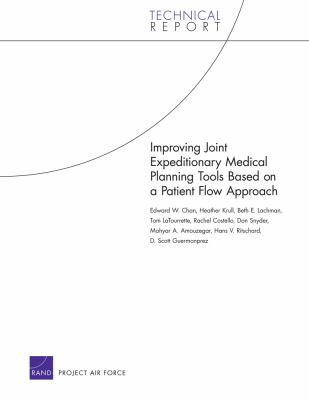
e-Book
|
Improving joint expeditionary medical planning tools based on a patient flow approach
Copies
0 Total copies, 0 Copies are in,
0 Copies are out.
Title
Improving joint expeditionary medical planning tools based on a patient flow approach
Digital Link
Subjects
Language
English
Published
Santa Monica, CA : RAND, 2012.
Publication Desc
1 online resource (xviii, 53 p.) : col. ill., col. maps (digital, PDF file).
ISBN
9780833059000
Series









